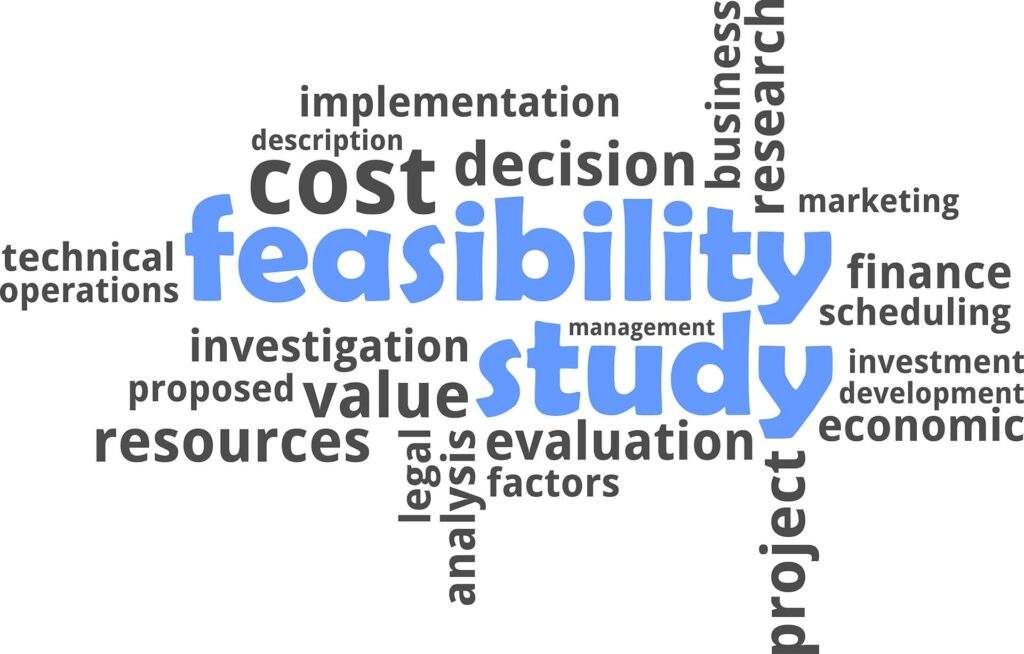
Pre Vs. Post Feasibility Study- The Difference and Significances Need to Know
Whenever a project is being planned, feasibility assessments are a crucial step. It is an essential phase that enables companies to ascertain, before making any considerable investment, whether a project is viable, economically feasible, and practically practicable. Pre-feasibility studies and post-feasibility studies refer to the phases of a feasibility study that can be carried out before or after a project proposal. We’ll go through the distinctions between pre vs. post-feasibility study in this article, as well as their relevance.
Pre-Feasibility Study
Before wholly submitting a project proposal, a pre-feasibility study is carried out. The project’s viability, possible hazards, and opportunities are intended to be initially evaluated. When there is a general understanding of the project’s scope, goals, and budget, the pre-feasibility study is typically conducted. Determining whether the project is worthwhile for further time and resources is its key goal.
Pre-feasibility study techniques often include thorough market evaluations, technical assessments, financial analyses, and risk assessments. A market study examines the project’s target market to determine whether there is a need for the product or service, the level of competition, and the potential revenue. The technical requirements of the project, including those for infrastructure, machinery, and other tools, are assessed to determine whether they are practical and realistically achievable. The financial study looks at the project’s potential profitability, anticipated cash flows, and break-even point. The final step involves conducting a risk assessment to identify any dangers that could affect the project’s success.
Significance of Pre-Feasibility Study
The pre-feasibility study is important because it enables businesses to make educated judgments regarding whether or not to move forward with the project. A clear understanding of the project’s potential risks, difficulties, and opportunities is provided. Regulation issues, technical difficulties, and financial limitations are just a few of the potential roadblocks that the study aids in identifying. When making investment decisions, it is crucial for the company to be able to assess the project’s costs, timelines, and potential profitability.
Post-Feasibility Study
In contrast, a post-feasibility study is completed following the project proposal’s approval. The project’s viability and practicality are attempted to be more thoroughly examined. A feasibility study company frequently conducts a post-feasibility study after making a substantial financial investment in a project and wants to know if it can move on with additional funds.
The post-feasibility study carefully considers the project’s market, technical requirements, financial projections, and risk assessment. It often includes more information than the pre-feasibility study and aims to provide a more realistic assessment of the project’s chances of being both technically and financially feasible.
The study may also involve building prototypes or conducting pilot testing to identify any potential barriers and assess the viability of the study’s suggested solutions.
Significance of Post-Feasibility Study
The post-feasibility study is important because it enables firms to assess project development and decide if it merits a future investment. It enables companies to recognize any potential difficulties or roadblocks that might have appeared throughout the project’s execution and create plans to get around them. The study also offers more precise financial forecasts, which are critical for selecting investments.
The Difference between Pre vs. Post-Feasibility Study
Pre-and post-feasibility studies mostly differ from one another in terms of timing. Pre-feasibility studies are finished prior to project proposal approval, whilst post-feasibility studies are finished following approval.
Pre-feasibility studies are primarily concerned with identifying potential risks and opportunities. The analysis is to give detailed information on the project’s possible viability and profitability. However, the post-feasibility study’s main objectives are to assess the project’s development and decide whether it makes sense to allocate additional cash.
When a general understanding of the project’s scope, objectives, and budget has been established, pre-feasibility studies are typically carried out. It provides a benchmark for choosing to approve or reject the project proposal. Contrarily, the post-feasibility study is finished following the project proposal’s acceptance and after it has already received a sizable amount of cash.
Conclusion
Conducting a feasibility study is a crucial step in the development of projects and the selection of investments. Feasibility studies are carried out at various stages of the project planning process. The two main types of feasibility studies are pre- and post-feasibility studies. Pre-feasibility studies are finished before the project proposal is authorized, while post-feasibility studies are finished after the project proposal has been authorized. A complete examination of the project’s viability, potential dangers, and prospects is provided in the pre-feasibility study. The post-feasibility study will thoroughly and appropriately assess the project’s viability, development, and possible profitability. To help firms decide whether or not to raise their investment in a project, both studies are necessary.
















